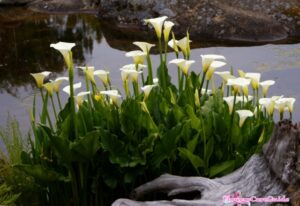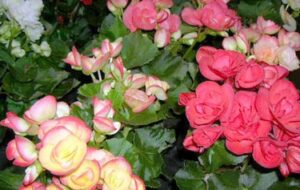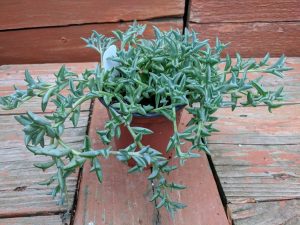Nephthytis, also known as Syngonium or Arrowhead Vine, or White Butterfly, is a popular houseplant appreciated for its attractive foliage and ease of care. Here’s a detailed guide on how to grow nephthytis and take care of it:
- Light: Place your Nephthytis plant in bright, indirect light. It can tolerate lower light conditions but will grow best with moderate to bright light. Avoid direct sunlight, as it can scorch the leaves.
- Temperature: Maintain a temperature between 60°F to 75°F (15°C to 24°C). Nephthytis plants prefer warm environments and are sensitive to cold drafts. Protect them from temperature extremes.
- Watering: Keep the soil consistently moist but not waterlogged. Water the plant when the top inch (2.5 cm) of the soil feels slightly dry. Avoid allowing the plant to sit in standing water, as it can lead to root rot. Adjust the watering frequency based on the temperature and humidity levels.
- Humidity: Nephthytis plants thrive in high humidity. Increase humidity levels by misting the leaves with water or placing the pot on a tray filled with pebbles and water. Grouping plants together can also create a more humid microclimate.
- Soil: Use a well-draining potting mix that retains some moisture. A mixture of peat moss, perlite, and potting soil works well for Nephthytis. Ensure the pot has drainage holes to prevent waterlogging.
- Fertilizer: Feed your Nephthytis plant with a balanced liquid fertilizer every 4-6 weeks during the growing season (spring and summer). Follow the instructions on the fertilizer packaging for the appropriate dilution. Avoid fertilizing during the dormant period in winter.
- Pruning: Regularly prune your Nephthytis to control its size and shape. Trim back leggy stems and remove any yellowing or dead leaves. Pruning can also encourage bushier growth. Use clean, sharp pruners or scissors to make clean cuts.
- Support: As your Nephthytis plant grows, provide a trellis or support for it to climb if desired. Gently guide the vines and secure them to the support structure with soft ties or plant clips.
- Pests and Diseases: Keep an eye out for common houseplant pests like spider mites, mealybugs, and aphids. Regularly inspect the leaves and stems for signs of infestation. Treat any pests promptly with appropriate insecticidal soap or neem oil. Ensure good airflow around the plant to prevent diseases.
- Propagation: You can propagate Nephthytis through stem cuttings. Take a cutting with a few nodes and place it in water or a well-draining potting mix. Once roots develop, transfer it to a pot with soil.
By following these care instructions, you can successfully grow and care for your Nephthytis plant. Remember to observe your plant closely and adjust the care routine as needed based on its specific needs and environmental conditions.
How much sun does nephthytis need?
Nephthytis, also known as Syngonium or Arrowhead Vine, prefers bright, indirect light. It can tolerate lower light conditions, but its growth may be slower and the colors of the foliage may not be as vibrant.
While Nephthytis can adapt to various light levels, it’s important to avoid exposing it to direct sunlight, especially during the hottest parts of the day. Direct sunlight can scorch the leaves and cause damage. It’s best to provide filtered or diffused light, such as through a sheer curtain or in a well-lit room away from direct sunbeams.
In terms of specific lighting recommendations, placing your Nephthytis near an east or west-facing window is usually ideal. This provides the plant with the bright, indirect light it needs without subjecting it to the intensity of direct sunlight. If you’re growing it indoors, you can also consider using artificial grow lights to provide the appropriate amount of light if natural light is limited.
Overall, finding a balance of bright, indirect light is key for the optimal growth and health of your Nephthytis plant. Monitor how the plant responds to its current light conditions and adjust as needed to ensure it receives the right amount of sunlight without being exposed to direct rays.
What are the benefits of nephthytis?
Nephthytis, or Syngonium, is primarily grown as an ornamental houseplant for its attractive foliage. While it may not have specific medicinal or health benefits like some other plants, there are several general benefits to having Nephthytis in your home or workspace:
- Air purification: Like many indoor plants, Nephthytis can help improve air quality by filtering and purifying the surrounding air. It absorbs toxins such as formaldehyde, benzene, and xylene from the environment, which are commonly found in household products and indoor pollutants.
- Increased humidity: Nephthytis plants release moisture through their leaves, which can help increase humidity levels in the surrounding area. This can be beneficial in dry indoor environments, particularly during winter months or in regions with low humidity.
- Aesthetically pleasing: Nephthytis plants are appreciated for their attractive foliage. The arrowhead-shaped leaves often display variegated patterns, with combinations of green, white, cream, or pink colors. Their lush, trailing or climbing growth habit adds beauty and visual interest to any indoor space.
- Easy care: Nephthytis is generally considered a low-maintenance plant, making it suitable for beginners or busy individuals. It is relatively forgiving and can tolerate a range of light and watering conditions, although providing optimal care will help it thrive.
- Versatile growth habits: Nephthytis can be grown in various ways, depending on your preference and available space. It can be cultivated as a trailing plant in hanging baskets or as a climber with the support of a trellis or stake. This versatility allows for creative displays and allows you to adapt the plant to your specific indoor environment.
While the primary benefits of Nephthytis are related to its aesthetic appeal and potential air-purifying properties, the presence of plants in general has been associated with positive effects on mood, stress reduction, and overall well-being. So, beyond the specific benefits of Nephthytis, having plants in your surroundings can contribute to a healthier and more enjoyable living space.
Is nephthytis plant toxic to humans and pets like cats?
Yes, Nephthytis plants, also known as Syngonium or Arrowhead Vine, are considered toxic to humans and pets. The plant contains calcium oxalate crystals, which can cause irritation and discomfort if ingested or if the sap comes into contact with the skin or mucous membranes.
When handling a Nephthytis plant, it’s advisable to wear gloves to avoid direct contact with the sap. If any part of the plant is accidentally ingested or if skin contact occurs, it’s important to seek medical advice and rinse the affected area with plenty of water. Ingestion of larger quantities or severe reactions may require immediate medical attention.
To ensure the safety of children and pets, it’s recommended to keep Nephthytis plants out of their reach and educate them about the potential risks associated with handling or consuming any parts of the plant.
If you have concerns about the toxicity of specific plants or if you suspect accidental ingestion, it’s always best to consult with a medical professional or veterinarian for proper guidance and care.
What’s the difference between Syngonium and nephthytis?
The terms “Syngonium” and “Nephthytis” are often used interchangeably to refer to the same plant. However, there is some confusion and discrepancy surrounding the exact taxonomy and nomenclature of these plants. Here are some key points to understand the difference:
- Scientific classification: Syngonium and Nephthytis are both botanical genera within the family Araceae. Syngonium is the accepted genus name, while Nephthytis is considered a synonym or outdated name.
- Common usage: In general, the term “Syngonium” is more commonly used in horticulture and the houseplant trade to refer to the popular species with arrowhead-shaped leaves. This includes varieties such as Syngonium podophyllum, Syngonium erythrophyllum, and Syngonium angustatum. These plants are often referred to as Arrowhead Vines or Arrowhead Plants.
- Historical confusion: The confusion between Syngonium and Nephthytis arises from older taxonomic classifications and the usage of the term “Nephthytis” for some species within the Syngonium genus. In the past, some species of Syngonium were classified as Nephthytis, but in modern taxonomy, they are considered part of the Syngonium genus.
To summarize, while “Syngonium” is the preferred and more widely used term in current horticulture, “Nephthytis” is an older synonym that has fallen out of favor. In practical terms, when people refer to Syngonium or Nephthytis plants, they are usually talking about the same group of plants with arrowhead-shaped leaves and similar growth habits.
How big do Nephthytis grow?
Nephthytis, or Syngonium, can vary in size depending on the specific variety and growing conditions. As a general guideline, here are the average growth characteristics of Nephthytis plants:
- Height: Nephthytis plants typically grow to a height of about 6 to 18 inches (15 to 45 cm) when grown as potted houseplants. However, certain varieties can grow taller with proper support or when allowed to climb.
- Spread: The spread of Nephthytis plants can range from 12 to 36 inches (30 to 90 cm) or more. This refers to the width or lateral expansion of the plant’s foliage and vines.
- Leaf size: The size of individual leaves can vary depending on the maturity of the plant and the specific variety. Younger plants usually have smaller leaves, while mature specimens can develop larger leaves. Leaf size can range from a few inches up to around 10 inches (25 cm) in length.
It’s worth noting that Nephthytis is a vining plant that can exhibit a trailing or climbing growth habit. If provided with suitable support, such as a trellis or stake, it can climb and reach greater heights. Without support, the plant will typically spread and trail along the ground or cascade over the edges of containers.
Regular pruning and shaping can help control the size and shape of your Nephthytis plant, encouraging bushier growth and preventing it from becoming overly leggy or sprawling.
Remember that these size estimates are general guidelines, and actual growth can vary depending on factors like light, temperature, humidity, and care practices. Observing your specific Nephthytis plant over time will give you a better idea of its growth patterns and potential size in your particular growing conditions.



